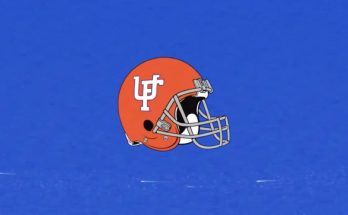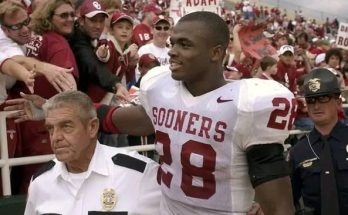In the world of sports, the lines between friendship and rivalry are often blurred, creating some of the most compelling stories in athletic history. The journey from teammates working side by side to competitors facing off on opposing fields or courts is filled with emotion, respect, and a deep understanding of what it means to push oneself to the limit. This is the story of two athletes who once shared the unique honor of being co-captains on the same team but have since found themselves as fierce rivals in the same division. Their journey is a testament to the power of friendship, the complexities of competition, and the passion that fuels sportsmanship at its highest level.
When two players rise through the ranks together, their bond often transcends the game itself. These co-captains were no different. They were leaders not only by title but by example, respected by teammates and coaches alike for their work ethic, leadership, and unyielding dedication to their sport. They celebrated victories together, learned from defeats side by side, and held each other accountable to the highest standards. Their partnership was a beacon of unity and strength for their team, creating a foundation that was both inspiring and unbreakable.
However, as is often the case in competitive sports, paths diverge. Opportunities arise that take players to different teams, sometimes within the same division, setting the stage for a new dynamic — one where camaraderie meets competition. The transition from being allies to adversaries is never easy, especially when the history shared is as rich as theirs. Yet, it is within this transition that the true essence of sportsmanship is revealed.
Their story begins with mutual respect, the kind that only those who have faced the same challenges can understand. Early on, their leadership styles complemented each other perfectly. One was known for his calm, strategic approach to the game, analyzing every play with precision and patience. The other was fiery and instinctive, a natural motivator whose energy could lift a team even in its darkest moments. Together, they balanced each other out, creating a dynamic that was greater than the sum of its parts.
The season they served as co-captains was memorable for many reasons. It was a season marked by impressive wins, hard-fought battles, and the kind of teamwork that defines championship-caliber squads. Their relationship was at the heart of it all, a symbol of unity that extended beyond the locker room. Off the field, their friendship flourished through shared experiences, late-night strategy sessions, and a mutual commitment to helping each other grow not just as athletes but as people.
But life in sports is unpredictable. After that landmark season, circumstances changed. One co-captain received an offer from a rival team within the same division — an opportunity that promised growth, new challenges, and a fresh start. The decision was difficult, weighed heavily with considerations of loyalty, ambition, and personal goals. Ultimately, the pull of forging his own path was too strong to resist.
Their first meeting as opponents was charged with a mix of anticipation and nostalgia. The cheers of the crowd, the roar of the stadium, and the weight of rivalry created an electric atmosphere. Yet beneath it all was a quiet acknowledgment of their shared history. Each knew the other’s strengths intimately, and that knowledge added a layer of complexity to the competition. It wasn’t just about winning anymore; it was about proving to themselves and their teams what they were capable of individually.
The games that followed were intense, hard-fought, and often closely contested. They pushed each other to perform at their best, raising the level of play not only for themselves but for their entire teams. Their rivalry became one of the division’s most anticipated matchups, drawing fans eager to witness the clash of two former leaders now on opposing sides. Sportswriters and analysts debated the implications, highlighting the personal narrative that made every encounter compelling.
Despite the intensity of their rivalry, respect remained the foundation of their relationship. There were moments of sportsmanship that stood out — a nod after a particularly impressive play, a handshake across the midfield line, or a brief word of encouragement before the game. These gestures reminded everyone that beneath the competition was a deep-seated respect forged through years of shared trials and triumphs.
Their rivalry also highlighted a broader truth about leadership and growth. Leading a team is never just about individual talent; it’s about inspiring others, fostering trust, and navigating adversity. Both co-captains demonstrated these qualities in different ways, and their journeys illustrated how leadership can evolve. On opposing teams, they each became a focal point around which their squads rallied, proving that the skills honed together could flourish independently.
Off the field, their friendship endured, adapting to the new circumstances. They remained confidants, offering advice and support even as they prepared to face off on game day. Their relationship became a blueprint for how competition need not sever bonds but can instead deepen mutual understanding. They shared stories, insights, and the occasional friendly tease — a reminder that their connection was far more than the rivalry that fans saw.
As the seasons progressed, their rivalry became emblematic of the division’s competitive spirit. It sparked conversations about the nature of sportsmanship, the value of friendship in competitive arenas, and the ways in which personal history shapes athletic narratives. Coaches praised them for setting an example of respect and professionalism, while fans admired the passion and intensity they brought to every game.
Looking back, the story of these co-captains turned rivals offers a powerful lesson. Sports are not just about winning or losing; they are about relationships, growth, and the ability to embrace change with grace. Their journey reminds us that even when competition places us on opposite sides, the bonds formed through shared leadership and teamwork can endure — sometimes even stronger than before.
Ultimately, their story is a celebration of what makes sports so captivating: the intersection of human connection and competitive fire. It’s about two individuals who started together, lifted each other up, and now meet as worthy opponents, united by a past that continues to inspire their present. Their rivalry is not a fracture but a continuation of a shared journey — one defined by friendship, fierce competition, and the relentless pursuit of excellence.



